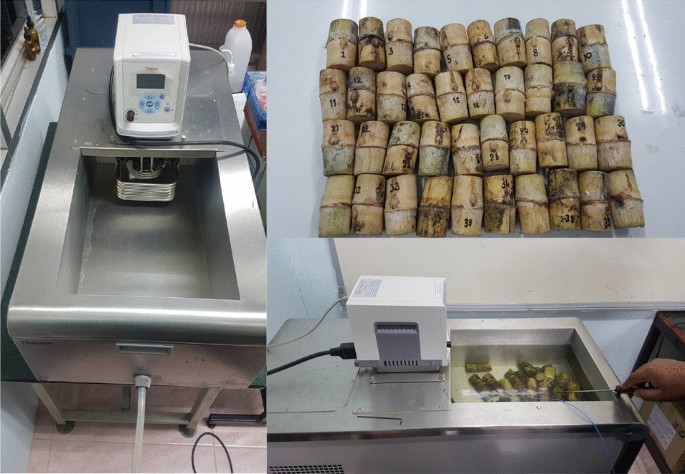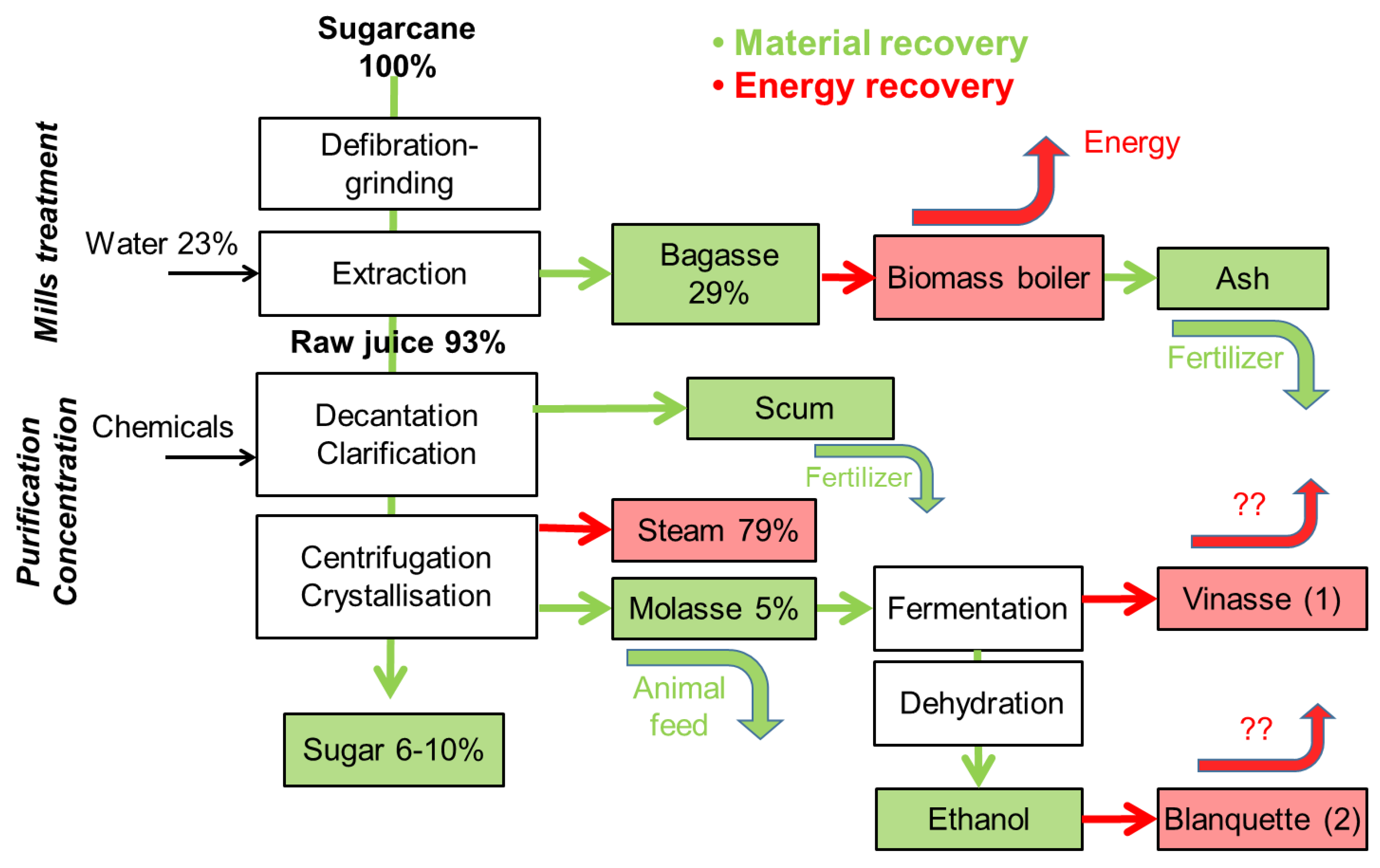What You Need to Know About Products From Sugarcane in Fashion
What You Need to Know About Products From Sugarcane in Fashion
Blog Article
Opening the Potential of Products From Sugarcane: a Comprehensive Guide
The possibility of sugarcane extends much beyond its conventional use for sugar production. This guide checks out the diverse applications of sugarcane, from energy and eco-friendly materials to wellness products. By examining its journey from field to factory, it discloses exactly how sustainable techniques can transform waste right into valuable resources. As industries seek eco-friendly options, the question continues to be: how can these advancements improve our technique to agriculture and manufacturing?

The Trip of Sugarcane: From Field to Manufacturing facility
Sugarcane goes through an interesting change as it travels from rich areas to bustling manufacturing facilities. In the fields, the high, eco-friendly stalks are gathered, generally by mechanical methods or manual work. As soon as reduced, the sugarcane is swiftly transported to refining facilities to ensure maximum quality. At the factory, the very first step entails squashing the walking stick to extract the wonderful juice, which has sucrose. Products From Sugarcane. This juice is then filteringed system and clarified, eliminating pollutants. Following this, it undergoes dissipation to concentrate the sugar web content, leading to formation. The resulting sugar crystals are separated from the staying molasses with centrifugation. The sugar is dried and packaged for circulation. Throughout this trip, keeping quality and performance is crucial, as the techniques employed straight effect the item's final high quality. This transformation not just highlights the farming significance of sugarcane yet also its significant role in the worldwide economic climate
Sugar and Its By-products: More Than Just Sweetness
The improvement of sugarcane into polished sugar opens up the door to a vast array of products and applications that extend beyond mere sweetness. Sugar and its derivatives, such as molasses, brown sugar, and glucose, play vital duties in numerous industries, including food, pharmaceuticals, and cosmetics. In the food industry, these components improve flavors, improve structure, and serve as preservatives.Molasses, a by-product of sugar production, is rich in minerals and vitamins, making it a valuable component in organic food and animal feed. Glucose, a simple sugar stemmed from sugarcane, offers as a substantial power resource in sports nutrition and is vital in the manufacturing of confectionery. Furthermore, sugar by-products are utilized in fermentation procedures, contributing to the manufacture of liquors and various other microbial products. In general, the flexibility of sugar and its derivatives highlights their relevance past simple sweetness in daily life.
Biofuels: Harnessing Energy From Sugarcane

A significant section of worldwide biofuel manufacturing currently depends on sugarcane, recognized for its high power yield and efficiency in converting sunshine into biomass. This exotic plant works as a main source for ethanol, a renewable fuel that can change gasoline in automobiles. Sugarcane's capability to produce more ethanol per hectare than various other feedstocks, such as corn, adds to its enhancing appeal among biofuel producers.The fermentation procedure of sugarcane juice or molasses creates ethanol, which can be blended with nonrenewable fuel sources to lower greenhouse gas emissions. In addition, by utilizing the recurring bagasse from sugarcane handling, energy can be created through burning, further improving the sustainability of biofuel manufacturing. As nations seek to minimize climate modification influences, sugarcane biofuels provide an appealing solution, strengthening energy protection and promoting agricultural sustainability while supporting country economies.
Biodegradable Plastics: The Sustainable Different
How can industries move to even more lasting techniques in the face of growing plastic air pollution? One promising option exists in biodegradable plastics derived from sugarcane. Unlike standard petroleum-based plastics, these bioplastics supply an eco-friendly option that can substantially minimize ecological impact. Made from sustainable sources, sugarcane-based plastics break down much more rapidly in various problems, reducing land fill accumulation and marine debris.The manufacturing of naturally degradable plastics not only addresses waste monitoring obstacles but also lines up with the raising customer need for lasting items. Industries embracing these products can boost their brand name picture while adding to a circular economy. In addition, the change to biodegradable options urges technology and financial investment in brand-new modern technologies, cultivating a greener market landscape.As a lot more business recognize the benefits of sugarcane-derived plastics, the potential for prevalent fostering boosts, leading the way for a more lasting future in packaging and product layout.
Animal Feed and Fertilizers: Utilizing Results
The by-products of sugarcane processing hold substantial potential for both animal nourishment and natural plant foods. These results can be integrated into pet feed, supplying necessary nutrients while lowering waste. In addition, they can function as effective natural fertilizer alternatives, enhancing dirt health and wellness and promoting lasting farming practices.
Results in Pet Nourishment
While sugarcane is primarily valued for its sucrose content, its results play a crucial role in animal nutrition, specifically in the type of pet feed and fertilizers. The coarse deposit called bagasse, created during the extraction of juice, works as a useful source of roughage for animals. This high-fiber product improves digestion and advertises total health in ruminants. In addition, molasses, a by-product of sugar refining, is rich in energy and can be used to supplement animal diet plans, enhancing palatability and dietary value. Vinasse, a fluid by-product from ethanol manufacturing, consists of essential nutrients and can be made use of as a feed additive. Overall, sugarcane by-products contribute substantially to sustainable pet nutrition techniques.
Organic Plant Food Options
Utilizing sugarcane by-products extends beyond animal nourishment to incorporate natural plant food alternatives that profit farming practices. The fibrous residues, such as bagasse and filter cake, offer as reliable organic fertilizers, enhancing soil health and boosting crop yields. These products are abundant in nutrients, including nitrogen, phosphorus, and potassium, vital for plant growth. When broken down, they improve dirt framework, water retention, and microbial activity, cultivating a sustainable farming ecosystem. Furthermore, utilizing sugarcane by-products for fertilizing minimizes dependence on synthetic plant foods, advertising eco-friendly farming approaches. By reusing these results, farmers can add to a round economic climate while maximizing Clicking Here their productivity and reducing waste. This method exhibits cutting-edge strategies in lasting farming, leveraging sugarcane's complete possibility.
Health and wellness and Health: Nutritional Benefits of Sugarcane
Countless research studies highlight the nutritional advantages of sugarcane, making it a beneficial enhancement to a balanced diet Read Full Article plan. Rich in crucial nutrients, sugarcane has considerable amounts of minerals, vitamins, and carbs, especially vitamin C, calcium, and potassium. These parts contribute to total health and wellness, supporting immune feature and bone strength.Moreover, sugarcane is a natural source of anti-oxidants, which help battle oxidative tension and swelling in the body. Its high fiber material help in digestion, advertising digestive tract wellness and protecting against bowel irregularity. In addition, sugarcane juice has been linked to hydration and energy replenishment, making it a superb option for professional athletes or those participating in difficult activities.Furthermore, the glycemic index of sugarcane is reasonably low, permitting a more progressive launch of energy, which might be beneficial for individuals handling blood glucose degrees. Overall, integrating sugarcane right into one's diet regimen can provide a rejuvenating and nourishing alternative for health-conscious people.
Advancements in Sugarcane Products: Future Trends and Opportunities
What technologies exist in advance for sugarcane items as industries seek to boost sustainability and consumer allure? The future of sugarcane products is positioned for significant developments, driven by the demand for eco-friendly alternatives. Developments in bio-based product packaging, stemmed from sugarcane, are acquiring traction, offering a lasting substitute for traditional plastics. In enhancement, the exploration of sugarcane's bioactive compounds is most likely to bring about new health and wellness supplements and functional foods, maximizing its all-natural benefits.Research into fermentation processes might generate unique biofuels, better diversifying sugarcane's energy. Moreover, the growth of genetically customized sugarcane varieties guarantees boosted yields and resistance to bugs, consequently supporting sustainable farming methods. As consumers become extra ecologically conscious, the combination of transparency in sourcing and manufacturing methods will certainly also play an important duty in shaping the future of sugarcane items. Ultimately, these technologies could redefine sugarcane's setting in international markets.
Frequently Asked Concerns
What Are the Ecological Effects of Sugarcane Farming?
The ecological impacts of sugarcane farming consist of logging, loss of biodiversity, soil destruction, and water air pollution Web Site - Products From Sugarcane. In addition, excessive chemical and plant food use can hurt environments, while monoculture practices might bring about decreased strength versus climate change

How Is Sugarcane Processed Into Different Products?
Sugarcane processing involves harvesting, crushing, and extracting juice, which is after that made clear and focused. The resulting syrup can be fermented for ethanol or taken shape for sugar, while fibers are utilized for bioenergy and other items.

Are There Any Kind Of Wellness Threats Connected With Sugarcane Usage?
The question of health and wellness dangers linked with sugarcane consumption highlights concerns such as excessive sugar consumption, potential allergic reactions, and stomach problems. Moderation is important to mitigate these threats while enjoying its nutritional benefits.
What Are the Economic Perks of Sugarcane Cultivation?
The economic advantages of sugarcane farming include task creation, enhanced farming productivity, and payments to regional economic situations. Furthermore, it sustains renewable resource manufacturing and supplies various by-products that can boost earnings within diverse markets.
How Does Sugarcane Contrast to Other Renewable Resources?
Sugarcane, as an eco-friendly resource, shows higher effectiveness in biomass production compared to several options. Its versatility permits for various by-products, adding especially to sustainable techniques, economic development, and decreasing dependence on fossil fuels. Glucose, a simple sugar obtained from sugarcane, offers as a considerable power source in sports nutrition and is crucial in the production of confectionery. Sugarcane's capability to generate even more ethanol per hectare than various other feedstocks, such as corn, adds to its boosting appeal amongst biofuel producers.The fermentation process of sugarcane juice or molasses generates ethanol, which can be mixed with fossil gas to minimize greenhouse gas emissions. Furthermore, sugarcane juice has actually been linked to hydration and energy replenishment, making it an exceptional selection for athletes or those engaging in laborious activities.Furthermore, the glycemic index of sugarcane is fairly reduced, enabling for a much more gradual launch of energy, which may be valuable for people handling blood sugar degrees. In enhancement, the expedition of sugarcane's bioactive substances is most likely to lead to new wellness supplements and functional foods, capitalizing on its all-natural benefits.Research right into fermentation procedures may yield unique biofuels, additionally expanding sugarcane's utility. The question of health risks associated with sugarcane usage highlights issues such as too much sugar consumption, possible allergies, and intestinal issues.
Report this page